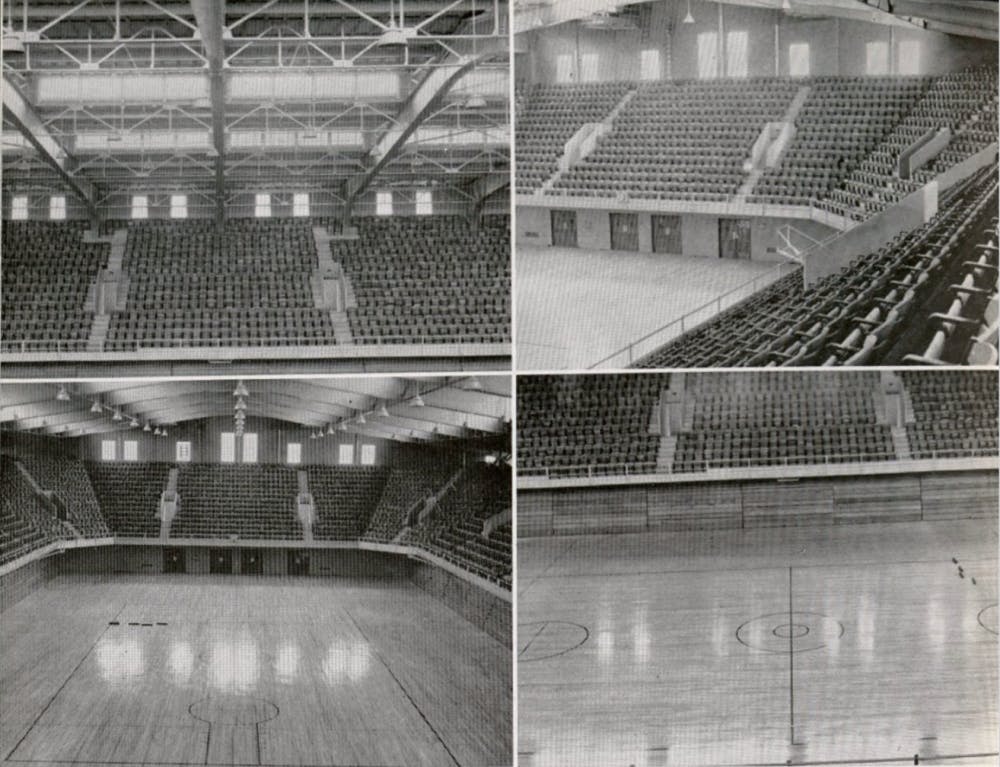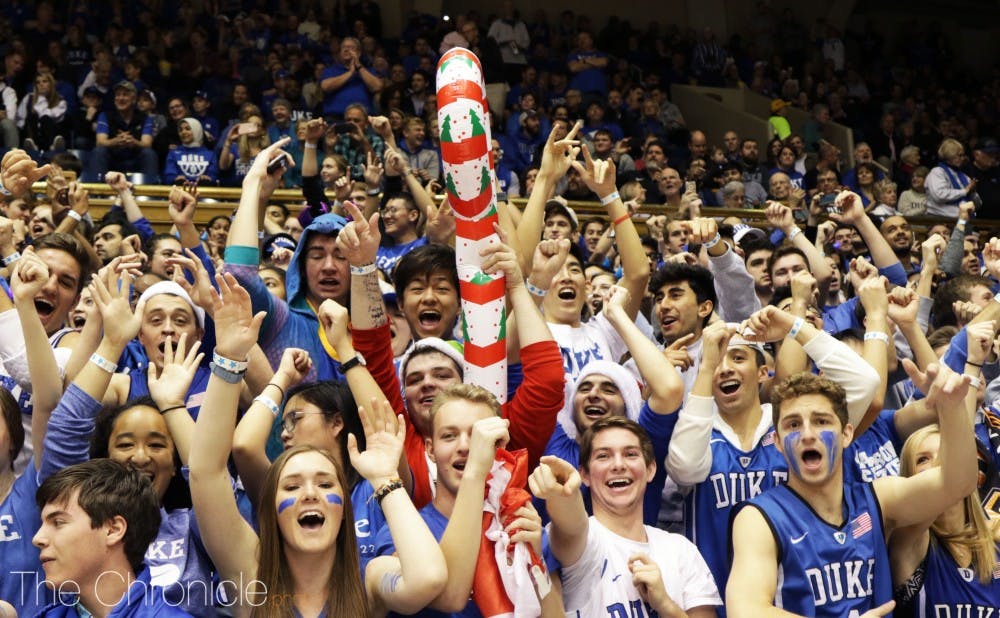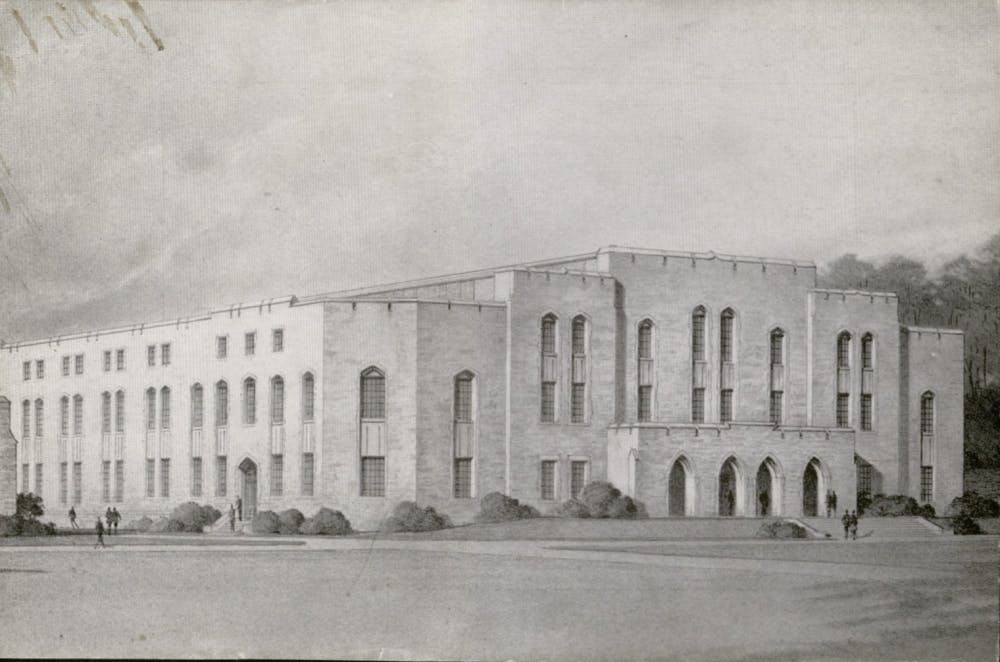When Duke played its first-ever intercollegiate basketball game in 1906, the Blue Devils took the court in a relatively unfamiliar spot. The Ark—more formally known as the Angier Duke Gymnasium—on what is Duke's present-day East Campus, hosted North Carolina's inaugural college hoops matchup as the Blue Devils fell to Wake Forest College 24-10.
But just less than 34 years after that contest, Duke would venture about two miles west, opening a brand-new 9,500-seat venue—then known as Duke Indoor Stadium—that would eventually become one of the most hallowed arenas in all of basketball.
Cameron Indoor Stadium, as it was later renamed in honor of the longtime coach and athletic director, Eddie Cameron, began its historic run with a 36-27 Blue Devil win Jan. 6, 1940. In the 78 years since, the building has played host to more than 800 victories, including many memorable moments.
It all began, though, when Duke took on the very same Princeton team that will return to Durham Tuesday evening.
Outgrowing The Ark
Blue Devil basketball came from the humblest of beginnings. Although Duke started playing games in 1906 under the leadership of head coach Cap Card, "the daddy of intercollegiate basketball in North Carolina" per a 1940 program, it wasn't until a decade later that the program started to win consistently. The Blue Devils went 20-4 during the 1916-17 season, yet still needed 11 different coaches up until Cameron's debut in 1927.
The next year, Duke joined the Southern Conference, the home of 22 other institutions, including future ACC foes North Carolina and N.C. State as well as regular-season champion Washington & Lee. The Blue Devils would then rack up winning records in all but one of the following 11 seasons.
By September 1938, it became clear Duke basketball, which had grown into one of the south's best programs, was in need of a new home.
According to a memo written that year, the Blue Devils "would require a building approximately 240 feet long by 165 feet wide and from 40 to 50 feet high." The "indoor stadium," as it was referred to at the time, would include a number of offices, dressing rooms for the home and away teams, space for Duke's athletic clubs and even "10 or 12 sleeping rooms for visiting teams."
Perhaps most notably, though, the main floor would have enough space for three full-sized basketball courts without the arena's temporary seats—something that Cameron maintains today.
The projected cost at the time? $325,000, which in today's money is the equivalent of $5.85 million.
Sixteen months later, a bit longer than initially projected, Cameron Indoor Stadium was ready for its unveiling, as the Tigers came to town.

'Modern and complete'
The grand opening, complete with dignitaries and pregame ceremonies, didn't go off without a few hiccups. As Jim Sumner wrote for Blue Devil Weekly in 1993, "at precisely 8 p.m...a fuse had blown," delaying the speeches from University of North Carolina dean Robert House and then-Duke president William Wannamaker.
Eventually, the game got underway, and although the Blue Devils led by just two with 5:45 left, they would close out the night on a 9-2 surge to take down Princeton.
But Duke's new gym wasn't all about basketball. As detailed in the opening night program, the building could be the site of volleyball, tennis, boxing, wrestling and gymnastics, as well as the University's physical education classes and intramural athletics in the event of bad weather. There was also a tunnel that connected the new gym to Duke's old gym, which still stands on campus today as Card Gymnasium.
By the time Duke Indoor Stadium opened, it was 175 feet wide and 262 feet long with a steel span that was described as "one of the largest such spans in the country."
"[Our building] is generally recognized as one of the most modern and complete physical education buildings in the country," the program read. "The engineers have endeavored to incorporate in this structure the outstanding features of the best indoor athletic layouts in the land."
Julian Abele, perhaps most recognized for designing Duke's West Campus and the Duke Chapel, played a major role in the arena's development. After working much of his career in Philadelphia following his graduation from the University of Pennsylvania, Abele came to Durham and worked with the same folks that built the Palestra on Penn's campus to design Duke's indoor stadium.
At the time, Duke Indoor Stadium was the largest arena south of that very Palestra, but it remained generically named for its first 32 years of existence.

Lights, Cameron, Action
On Jan. 22, 1972, the Blue Devils' home officially became known as Cameron Indoor Stadium, honoring the man who remained Duke's winningest coach until the 1990-91 season with 226 victories at the helm in Durham.
Cameron, who died 16 years later in 1988, returned as the University's athletic director in 1952 after a few years without an official title at Duke. He also worked as the Blue Devils' football coach for four seasons with then-head coach Wallace Wade serving in World War II.
Duke hosted its first nationally televised matchup at Cameron Indoor in 1979, and the rest is history. The Blue Devils currently hold an 18-year, 145-game nonconference winning streak at home—a run they'll look to extend when Princeton enters Duke's historic venue Tuesday night.
And head coach Mike Krzyzewski, whom the court was named for in November 2000, still holds a special place in heart for the historic building that has now become an iconic piece of Blue Devil basketball.
"The most important thing for me is being in this gym," Krzyzewski said after winning his 1,000th game at Duke last November. "It's an amazing thing when you have great moments individually, but when you can share great moments is the best."

Get The Chronicle straight to your inbox
Signup for our weekly newsletter. Cancel at any time.
Twitter: @mpgladstone13
A junior from just outside Philadelphia, Mitchell is probably reminding you how the Eagles won the Super Bowl this year and that the Phillies are definitely on the rebound. Outside of The Chronicle, he majors in Economics, minors in Statistics and is working toward the PJMS certificate, in addition to playing trombone in the Duke University Marching Band. And if you're getting him a sandwich with beef and cheese outside the state of Pennsylvania, you best not call it a "Philly cheesesteak."

